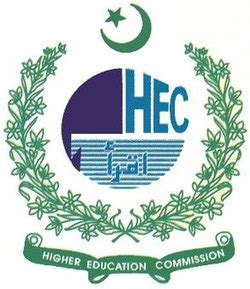The Dengue dynamics: Unraveling serotype trends over a decade at Rawalpindi Medical University
DOI:
https://doi.org/10.53992/njns.v10i2.260Keywords:
Dengue virus, Serotype prevalence, Rawalpindi Medical University, Epidemiology, Public healthAbstract
Dengue fever poses a persistent health challenge in Pakistan, marked by cyclic epidemics driven by serotype shifts. This study analyses decade-long trends (2013–2024) in Dengue Virus (DENV) serotype prevalence at Rawalpindi Medical University (RMU) to inform predictive models and improve prevention and control strategies. Our study looked at dengue cases confirmed by lab tests at RMU from 2013 to 2024. We identified the most common dengue serotypes infecting the population each year and tracked changes in serotype patterns over time. A chi-square test was used to analyse the data trends. From 2013 to 2024, the dengue serotype landscape at RMU was predominantly shaped by DENV-2, which began as the sole serotype in 2013 and maintained its dominance, peaking at 72% in 2017. Notable shifts occurred with DENV-3 taking precedence in 2014 and a co-dominance of DENV-1 and DENV-2 in 2019. By 2023, DENV-1 surged to become the dominant serotype at 71%, only for DENV-2 to reclaim supremacy in 2024 with a striking 90%. While data gaps for certain years limit a comprehensive analysis, the study underscores significant trends: the persistent prevalence of DENV-2, the emergence of DENV-1, and the episodic presence of DENV-3. DENV-2 has been predominant in a statistically significant way (p = 0.018) over these years. These findings align with regional dengue patterns, underscoring the interconnected nature of its transmission. The dominance of DENV-2 highlights critical implications for disease severity and targeted public health responses. The data reveals shifting patterns in dengue virus serotypes over time. To stay ahead of potential outbreaks, it's crucial to continuously monitor these changes and adjust our strategies accordingly.
References
Biswal S, Reynales H, Saez-Llorens X, Lopez P, Borja-Tabora C, Kosalaraksa P, Sirivichayakul C, Watanaveeradej V, Rivera L, Espinoza F, Fernando L. Efficacy of a tetravalent dengue vaccine in healthy children and adolescents. New England Journal of Medicine. 2019 Nov 21;381(21):2009-2019.
World Health Organization. Dengue and severe dengue 2023 [Internet]. [cited 2023 Jun 22]. Available from: https://www.who.int/news-room/fact-sheets/detail/dengue-and-severe-dengue.
Messina JP, Brady OJ, Golding N, Kraemer MU, Wint GW, Ray SE, Pigott DM, Shearer FM, Johnson K, Earl L, Marczak LB. The current and future global distribution and population at risk of dengue. Nature microbiology. 2019 Sep;4(9):1508-1515.
Brady OJ, Gething PW, Bhatt S, Messina JP, Brownstein JS, Hoen AG, Moyes CL, Farlow AW, Scott TW, Hay SI. Refining the Global Spatial Limits of Dengue Virus Transmission by Evidence-Based Consensus. PLoS Negl Trop Dis. 2012;6: e1760.
Raza FA, Ur Rehman S, Khalid R, Ahmad J, Ashraf S, Iqbal M, Hasnain S. Demographic and clinico-epidemiological features of dengue fever in Faisalabad, Pakistan. PLoS One. 2014;9(3):e89868.
Suleman M, Faryal R, Aamir UB, Alam MM, Nisar N, Sharif S, Shaukat S, Khurshid A, Angez M, Umair M, Mujtaba G. Dengue outbreak in Swat and Mansehra, Pakistan 2013: An epidemiological and diagnostic perspective. Asian Pacific journal of tropical medicine. 2016 Apr 1;9(4):380-384.
Yang X, Quam MBM, Zhang T, Sang S. Global burden for dengue and the evolving pattern in the past 30 years. J Travel Med. 2021; 28(8):taab146.
Umareddy I. Towards understanding of the replication and pathogenesis of dengue infection. University of Basel; 2007.
Weaver SC, Vasilakis N. Molecular evolution of dengue viruses: contributions of phylogenetics to understanding the history and epidemiology of the preeminent arboviral disease. Infect Genet Evol. 2009;9(4):523‐540.
Estofolete CF, de Oliveira Mota MT, Terzian AC, de Aguiar Milhim BH, Ribeiro MR, Nunes DV, Mourão MP, Rossi SL, Nogueira ML, Vasilakis N. Unusual clinical manifestations of dengue disease-Real or imagined?. Acta tropica. 2019 Nov 1;199:105134.
Vaughn DW, Green S, Kalayanarooj S, Innis BL, Nimmannitya S, Suntayakorn S, Endy TP, Raengsakulrach B, Rothman AL, Ennis FA, Nisalak A. Dengue viremia titer, antibody response pattern, and virus serotype correlate with disease severity. J Infect Dis. 2000;181(1):2-9.
Haroon M, Jan H, Faisal S, Ali N, Kamran M, Ullah F. Dengue outbreak in Peshawar: clinical features and laboratory markers of dengue virus infection. J Infect Public Health. 2019;12(2):258-262.
Ross TM. Dengue virus. Clin Lab Med. 2010;30(1):149‐160.
Parveen S, Riaz Z, Saeed S, Ishaque U, Sultana M, Faiz Z, Shafqat Z, Shabbir S, Ashraf S, Marium A. Dengue hemorrhagic fever: a growing global menace. Journal of water and health. 2023 Nov 1;21(11):1632-1650.
Gubler DJ. The global pandemic of dengue/dengue haemorrhagic fever: current status and prospects for the future. Annals of the Academy of Medicine, Singapore. 1998 Mar 1;27(2):227-234.
World Health Organization, Special Programme for Research, Training in Tropical Diseases, World Health Organization. Department of Control of Neglected Tropical Diseases, World Health Organization. Epidemic, Pandemic Alert. Dengue: guidelines for diagnosis, treatment, prevention and control. World Health Organization; 2009.
Akram DS, Igarashi A, Takasu T. Dengue virus infection among children with undifferentiated fever in Karachi. The Indian Journal of Pediatrics. 1998 Sep;65(5):735-740.
Rasheed SB, Butlin RK, Boots M. A review of dengue as an emerging disease in Pakistan. Public health. 2013 Jan 1;127(1):11-17.
Akram DS, Igarashi A, Takasu T. Dengue virus infection among children with undifferentiated fever in Karachi. The Indian Journal of Pediatrics. 1998 Sep;65(5):735-740.
Rasheed SB, Butlin RK, Boots M. A review of dengue as an emerging disease in Pakistan. Public health. 2013 Jan 1;127(1):11-17.
Jamil B, Hasan R, Zafar A, Bewley K, Chamberlain J, Mioulet V, Rowlands M, Hewson R. Dengue virus serotype 3, Karachi, Pakistan. Emerg Infect Dis. 2007;13(1):182.
Rai MA. Control of dengue fever in Pakistan. Nature. 2011;479(7371):41.
Savioli L, Crompton DW, Daumerie D, editors. Sustaining the drive to overcome the global impact of neglected tropical diseases: second WHO report on neglected tropical diseases. World Health Organization; 2013.
Zohra T, Saeed F, Ikram A, Khan T, Alam S, Adil M, Gul A, Almawash S, Ayaz M. Nanomedicine as a potential novel therapeutic approach against the dengue virus. Nanomedicine. 2023 Sep 1;18(22):1567-1584.
Halstead SB. Neutralization and antibody-dependent enhancement of dengue viruses. Adv virus res. 2003;1(60):421-467.
World Health Organization. Global strategy for dengue prevention and control 2012−2020. Geneva: WHO. 2012.
Khattak A, Khan S, Ali I, Gul A, Khabir MN, Javed B, Adnan M, Khan SN, Attaullah S. Burden and distribution of dengue infection in Pakistan (2000-19): a review. Brazilian Journal of Biology. 2023 Apr 14;84:e267982.
Chan YC, Salahuddin NI, Khan J, Tan HC, Seah CL, Li J, Chow VT. Dengue haemorrhagic fever outbreak in Karachi, Pakistan, 1994; 619-620.
Yousaf MZ, Siddique A, Ashfaq UA, Ali M. Scenario of dengue infection & its control in Pakistan: an up—date and way forward. Asian Pac J Trop Med. 2018;11(1):15‐23.
Rana MS, Usman M, Alam MM, Ikram A, Salman M, Faryal R, Umair M. The outbreak of dengue during the COVID-19 pandemic in Pakistan: The emergence of overlapping crises. Asian Pacific Journal of Tropical Medicine. 2022 Feb 1;15(2):53-5.
Hanan F, Ahmad J, Hadi S, Ali I, Fahim M, Qayum A. Analysis of dengue virus genotypes and further investigations for mixed infections through RT‐PCR in classical dengue fever patients in Pakistan. Int J Pathol. 2022;20:72‐78.
Umair M, Haider SA, Rehman Z, Jamal Z, Ali Q, Hakim R, Bibi S, Ikram A, Salman M. Genomic characterization of dengue virus outbreak in 2022 from Pakistan. Vaccines. 2023 Jan 11;11(1):163.
United Nations Office for the Coordination of Humanitarian Affairs (OCHA). Revised Pakistan 2022 Floods Response Plan Final Report. 18 Dec 2023. [cited 2024 Feb 29]. Available from: https://www.unocha. org/publications/report/pakistan/revised-pakistan-2022-floodsresponse-plan-final-report-issued-15-dec-2023.
IOM Pakistan, Situation Report No. 3: Pakistan Floods Response. 17 Oct 2023, [Internet]. Available from: https://reliefweb.int/report/pakistan/iom-pakistan-situation-report-no-3-pakistan-floods-response-17-october-2023.
Shahzada A. Pakistan meteorological department: dengue alert‐I. source: Govt. Pakistan Source: Govt. Pakistan. Accessed December 27, 2023 [Internet]. Availabale from: https://reliefweb.int/report/pakistan/pakistan-meteorological-department-dengue-alert-i-27-september-2023.
World Health Organization. Disease Outbreak News; Dengue-Global situation. 2023 [Internet]. Available from:https://www.who.int/emergencies /diseaseoutbreak-news/item/2023-DON498.
Jagtap S, Pattabiraman C, Sankaradoss A, Krishna S, Roy R. Evolutionary dynamics of dengue virus in India. PLoS Pathog. 2023; 19(4): e1010862.
Afreen N, Deeba F, Naqvi I, Shareef M, Ahmed A, Broor S, Parveen S. Molecular investigation of 2013 dengue fever outbreak from Delhi, India. PLoS currents. 2014 Sep 2;6:ecurrents-outbreaks. 2014;6.
Singh P, Mittal V, Rizvi MM, Chhabra M, Sharma P, Rawat DS, Bhattacharya D, Chauhan LS, Rai A. The first dominant co-circulation of both dengue and chikungunya viruses during the post-monsoon period of 2010 in Delhi, India. Epidemiology & Infection. 2012 Jul;140(7):1337-1342.
Abeygoonawardena H, Dassanayake K, Kariyawasam J, Chathuranga T, Sundralingam T, Gunasekara H, Wevita S, Premawansa G, Premawansa S, Wijewickrama A, Wijesinghe N. Identifying the strains of dengue circulating in the western province of Sri Lanka during 2019–2022. PLOS Global Public Health. 2024 Jul 16;4(7):e0003150.
Ocwieja KE, Fernando AN, Sherrill-Mix S, Sundararaman SA, Tennekoon RN, Tippalagama R, Krishnananthasivam S, Premawansa G, Premawansa S, De Silva AD. Phylogeography and molecular epidemiology of an epidemic strain of dengue virus type 1 in Sri Lanka. The American journal of tropical medicine and hygiene. 2014 Aug 6;91(2):225-234.
Tun MM, Muthugala R, Rajamanthri L, Nabeshima T, Buerano CC, Morita K. Emergence of genotype i of dengue virus serotype 3 during a severe dengue epidemic in Sri Lanka in 2017. Japanese journal of infectious diseases. 2021 Sep 30;74(5):443-449.
Ngwe Tun MM, Pandey K, Nabeshima T, Kyaw AK, Adhikari M, Raini SK, Inoue S, Dumre SP, Pandey BD, Morita K. An outbreak of dengue virus serotype 2 cosmopolitan genotype in Nepal, 2017. Viruses. 2021 Jul 24;13(8):1444.
Suzuki K, Phadungsombat J, Nakayama EE, Saito A, Egawa A, Sato T, Rahim R, Hasan A, Lin MY, Takasaki T, Rahman M. Genotype replacement of dengue virus type 3 and clade replacement of dengue virus type 2 genotype Cosmopolitan in Dhaka, Bangladesh in 2017. Infection, Genetics and Evolution. 2019 Nov 1;75:103977.
Phadungsombat J, Nakayama EE, Shioda T. Unraveling dengue virus diversity in Asia: an epidemiological study through genetic sequences and phylogenetic analysis. Viruses. 2024 Jun 28;16(7):1046.
Poltep K, Phadungsombat J, Nakayama EE, Kosoltanapiwat N, Hanboonkunupakarn B, Wiriyarat W, Shioda T, Leaungwutiwong P. Genetic diversity of dengue virus in clinical specimens from Bangkok, Thailand, during 2018–2020: Co-circulation of all four serotypes with multiple genotypes and/or clades. Tropical medicine and infectious disease. 2021 Sep 4;6(3):162.
Hamel R, Surasombatpattana P, Wichit S, Dauvé A, Donato C, Pompon J, Vijaykrishna D, Liegeois F, Vargas RM, Luplertlop N, Missé D.
Phylogenetic analysis revealed the co-circulation of four dengue virus serotypes in Southern Thailand. PloS one. 2019 Aug 15;14(8):e0221179.
Poltep K, Phadungsombat J, Nakayama EE, Kosoltanapiwat N, Hanboonkunupakarn B, Wiriyarat W, Shioda T, Leaungwutiwong P. Genetic diversity of dengue virus in clinical specimens from Bangkok, Thailand, during 2018–2020: Co-circulation of all four serotypes with multiple genotypes and/or clades. Tropical medicine and infectious disease. 2021 Sep 4;6(3):162.
Huang L, Xiao G, Chen H, Niu X, Fu X, Xu H, Xu G, Ma S, Ong J, Ng LC. Geographical clusters of dengue outbreak in Singapore during the Covid-19 nationwide lockdown of 2020. Scientific Data. 2022 Sep 7;9(1):547.
Amorim MT, Hernández LH, Naveca FG, Essashika Prazeres IT, Wanzeller AL, Silva EV, Casseb LM, Silva FS, da Silva SP, Nunes BT, Cruz AC. Emergence of a new strain of DENV-2 in South America: introduction of the cosmopolitan genotype through the Brazilian-Peruvian border. Tropical Medicine and Infectious Disease. 2023 Jun 17;8(6):325.
Giovanetti M, Pereira LA, Santiago GA, Fonseca V, Mendoza MP, De Oliveira C, De Moraes L, Xavier J, Tosta S, Fristch H, de Castro Barbosa E. Emergence of dengue virus serotype 2 cosmopolitan genotype, Brazil. Emerging infectious diseases. 2022 Aug;28(8):1725-1727.
Martínez D, Gómez M, Hernández C, Muñoz M, Campo-Palacio S, González-Robayo M, Montilla M, Pavas-Escobar N, Ramírez JD. Emergence of dengue virus serotype 2 Cosmopolitan Genotype, Colombia. Emerging Infectious Diseases. 2024 Jan;30(1):189-192.




